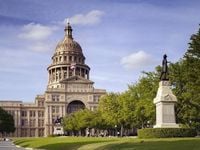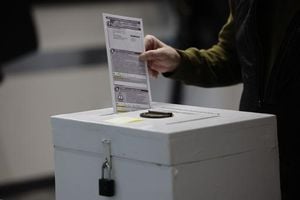In the heat of a summer already brimming with legal and political drama, the future of American democracy may be quietly undergoing a profound transformation. On August 6, 2025, the Supreme Court signaled—almost unmistakably—how it intends to rule on the fate of the Voting Rights Act of 1965, the landmark law that for six decades has served as a bulwark against racial discrimination at the ballot box. The case at the center of this brewing storm, Louisiana v. Callais, is just one of several high-profile battles over congressional maps and the right to fair representation now playing out across the country.
According to The New York Times, the dispute in Louisiana revolves around the drawing of the state’s six congressional districts. Nearly one-third of Louisianans are Black, yet in 2022, state lawmakers drew only a single district where Black voters had a reasonable shot at electing their preferred representative. In a region where voting is starkly polarized along racial lines—Black voters consistently supporting Democrats and white voters leaning Republican—this map effectively locked a significant minority out of meaningful political power.
Several individuals and advocacy groups, representing the interests of Black voters, sued under Section 2 of the Voting Rights Act. They argued that the law required Louisiana to create two districts where Black voters could elect candidates of their choice. A federal appeals court agreed and ordered the state legislature to draw a new map with a second majority-Black district. The response was swift: a group of self-described “non-African American” voters challenged the new map, claiming it constituted an illegal racial gerrymander. The Supreme Court, in turn, asked the parties to address whether intentionally creating a second majority-minority district violates the 14th or 15th Amendments—a question with seismic implications for the future of voting rights.
The signs from the High Court are not encouraging for supporters of the Voting Rights Act. Chief Justice John Roberts, who has long led efforts to curtail the law, appears poised to deliver another blow. As The New York Times’ Jamelle Bouie observed, Roberts has been chipping away at the Act for decades—first as a young lawyer in the Reagan administration, then as Chief Justice orchestrating the Court’s 2013 Shelby County v. Holder decision, which gutted the law’s critical preclearance provisions. Since then, the Court has continued to undermine the Act, shifting its focus from the effects of discrimination to the intent of lawmakers—a legal sleight of hand that, critics say, makes it nearly impossible to challenge racially discriminatory maps unless explicit racist intent can be proven.
The stakes are not merely academic. The Voting Rights Act’s immediate effect, when signed in 1965, was to enfranchise millions of Black Americans, particularly in the South. Black voter turnout in presidential elections in former Confederate states soared from about 25% in 1960 to over 60% by 1968. Voter registration rates in states like Alabama, Georgia, and Mississippi more than doubled within just two years. In the decade that followed, Southern states began electing Black lawmakers in numbers not seen since Reconstruction. Later amendments to the Act banned literacy tests, expanded protections to language minorities, and held states liable for discriminatory effects regardless of intent. A 2006 reauthorization, passed by a Republican-led Congress and signed by a Republican president, extended the law’s core provisions for another 25 years—until the Supreme Court intervened.
Meanwhile, the fight over fair maps has spilled into other states with dramatic consequences. In Texas, according to The Progressive, President Donald Trump has pressured Republicans to redraw voter boundaries to add five more Republican seats, driven by his anxiety over potentially losing control of the U.S. House in the 2026 midterms. The Justice Department, led by Attorney General Pam Bondi, sent a letter to Texas Governor Greg Abbott, falsely claiming that current maps violated federal law and demanding even more partisan redistricting. Abbott complied, calling a special session of the legislature, only for most Democratic lawmakers to flee the state in an attempt to block the plan. Abbott responded by declaring their actions unlawful and ordering their arrest.
Democrats, not to be outmaneuvered, have floated the idea that blue states like California, New York, and Illinois should retaliate by redrawing their own maps to create more Democratic-leaning districts. Republicans in states such as Ohio, Florida, Indiana, and Missouri are reportedly considering similar tactics. The result is a redistricting arms race, where the foundational principle that voters choose their leaders is increasingly at risk of being replaced by politicians choosing their voters.
Some advocates, like those at the pro-democracy law firm Law Forward in Wisconsin, are urging courts to intervene and recognize electoral competition as a relevant criterion in evaluating maps. They argue that independent, nonpartisan redistricting models—already adopted in several states—offer a better path forward. As the author in The Progressive put it, “Districts can and should be drawn both to avoid significantly advantaging one political party over another and to increase electoral competition. Whenever it is otherwise, elected officials have less incentive to be responsive to voters.”
Alabama, too, finds itself at the center of this national reckoning. In August 2025, a three-judge court in the state’s Northern District ruled unanimously that the legislature’s 2023 congressional map violated the Voting Rights Act and could not be used in future elections, as reported by AL.com. The court ordered Alabama to use a map drawn by a court-appointed special master, which included two majority-Black districts, until the next scheduled redistricting in 2030. This decision followed a May 2025 finding that the state’s legislature had deliberately enacted a plan lacking the second Black-opportunity district required by law. The court’s panel included two Trump appointees and one judge nominated by both Reagan and Clinton, underscoring the bipartisan consensus on the legal principles at stake.
The impact of this ruling was immediate and historic: for the first time, Alabama elected two Black representatives to Congress—Terri Sewell and Shomari Figures, both Democrats. The plaintiffs, represented by the American Civil Liberties Union and other advocacy groups, hailed the decision as “a testament to the dedication and persistence of many generations of Black Alabamians who pursued political equality at great cost.” Dr. Baodong Liu, a political science professor at the University of Utah, testified that Alabama’s voting is “highly, highly racially polarized,” calling it “arguably the highest level” of such polarization he has ever seen in more than two decades of research.
Yet, as the courts uphold the Voting Rights Act in some places, the Supreme Court’s looming decision in Louisiana v. Callais threatens to render the law toothless nationwide. The concern, as articulated by Bouie in The New York Times, is that the Roberts Court will use this case to “conclude its war on the Voting Rights Act with a decision that renders Section 2, and thus the law itself, moot: a toothless nullity to be ignored by those who fear the ballot and the power of a free choice.” If that happens, the very foundation of American democracy—a pluralistic, multiracial society where every citizen has a voice—could be in jeopardy.
As the nation awaits the Supreme Court’s final word, the ongoing struggles in Louisiana, Texas, Alabama, and beyond reveal a democracy at a crossroads. The outcome will determine not only the shape of congressional districts but the very meaning of representation and equality for generations to come.





